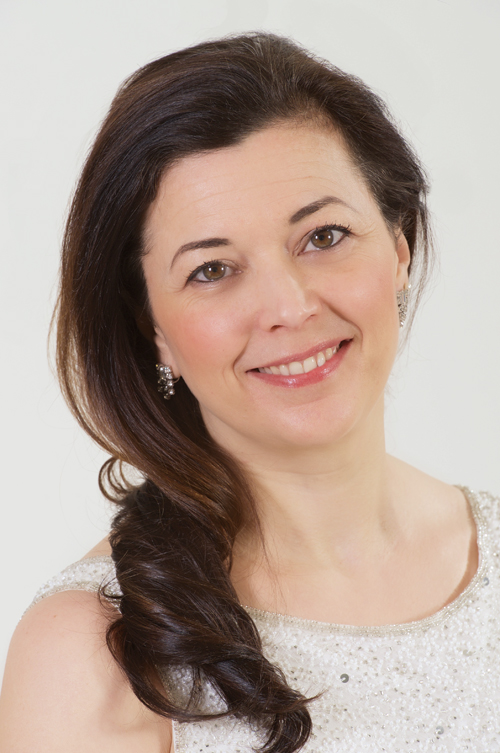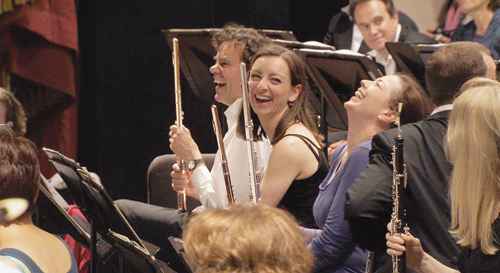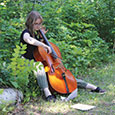
Emily Beynon, principal flute of the Royal Concertgebouw Orchestra in Amsterdam, studied at the Royal College of Music (junior department) with Margaret Ogonovsky and at the Royal Academy of Music with William Bennett. She continued her studies in Paris with Alain Marion. Besides her orchestral position, Beynon is active as a concerto soloist, chamber musician, and teacher. Beynon and Suzanne Wolff, a business woman and amateur flutist, founded the Netherlands Flute Academy in 2009.
What was your audition for the Royal Concertgebouw Orchestra like?
My audition was in February 1995. It was terrifying, and yet I enjoyed the fact that no one knew me, so I felt if I fell flat on my face, my failure would mean nothing to anyone except myself. I started in June of 1995 so I will soon be celebrating 20 years in the orchestra. With my hand on my heart, I can say that I enjoy it just as much and perhaps even more than my first days. It’s a wonderful orchestra, and there is a great atmosphere.
The audition procedure at the Concertgebouw is similar to most European orchestras. The core jury of 6-8 players is sent copies of all the applications to look through individually. Then they meet to discuss the 150 or so applications. In selecting whom to invite, very roughly speaking, it’s an equation of experience related to age.
Younger, less experienced players, or players from less well-known orchestras are invited to a first round (or in the case of players who live on another continent, a tape might be requested instead of a first round), and perhaps 12 players in an equivalent position in another top orchestra might be invited to the second round. Both first and second rounds are held behind a curtain, and the tape round is completely anonymous. The core jury listens to the first round and the tape round. For the later rounds, there is usually a larger jury of 25-35 players, depending on the position. Most often there are three to six finalists in the final round, and that is usually held (without curtain) in the recital hall of the Concertgebouw. There is no interaction with the jury, so it feels a little like a bizarre recital in a beautiful hall with no applause. Afterwards the jury votes anonymously (one person, one vote – including the chief conductor) and based on the outcome of the votes, an appointment could be made, or there might be a discussion which could result in a re-vote which might result in an appointment, or there will be no appointment made and we are back to the drawing board. Once an appointment is made, that player receives a contract for one year after which it might be extended indefinitely; the trial might be extended by a second year; or the contract will be terminated.
What was it like moving to Amsterdam?
As a child, I lived abroad in several different countries so I was not afraid of the idea of moving away from the UK. I knew that if I didn’t like it, I could come back. I did a teach-yourself-Dutch course after winning the audition, but as soon as I arrived, I realized that almost everyone speaks English. So for the first two years I just focused on the job, and then during the summer holiday between my second and third years, I set my mind to learning Dutch. I promised myself that after the holidays, I would speak Dutch at work. By that time, I had heard Dutch on a daily basis for two years, so it was quite easy to pick up enough to start speaking. Once you get to that stage and learn from making mistakes, then language learning accelerates hugely. These days my spoken Dutch is pretty much fluent, but I still prefer reading and writing in English.
How many flutists are in the Concertgebouw flute section?
There are five. We have two solo flutes, Kersten McCall and myself, a piccolo specialist, Vincent Cortvrint, an alto specialist, Julie Moulin, who also plays piccolo, and Mariya Semotyuk, who also plays piccolo. We actually play a lot of repertoire with four flutes, so they take it in turns playing 2nd and 3rd (depending partly on which has the bigger part for piccolo or alto).
Do you ever play the auxiliary flutes?
I have a large collection of instruments including 5 C flutes, a piccolo, an alto (one very bad alto which I want to turn into a lamp), a bass and a baroque flute. In the orchestra I am not contractually obliged to play piccolo, although if it is a fun part (rather than a tricky or exposed one), I do quite enjoy playing it. A Mahler symphony when all four of us switch to piccolos, for example, is great fun. Otherwise we do a bit of swapping round the parts, and I leave the tricky stuff to the expert, Vincent Cortvrint. I like playing piccolo parts in chamber music pieces like Maurice Ravel’s Chansons Madécasses. I only play the alto flute for Takemitsu’s Towards the Sea and other contemporary chamber music. I only get to play bass flute once in a while such as in the flute orchestra at the Netherlands Flute Academy concert. I do enjoy playing the bass line and have even been known to play contrabass on occasion.

What is the typical rehearsal and performance schedule?
It depends on the type of program. For a classic Brahms/Beethoven type program, we rehearse Monday, Tuesday and Wednesday with performances Wednesday, Thursday and Friday evenings, and then either Saturday evening or Sunday afternoon. The other extreme is a contemporary program, for which we might rehearse all week for one performance on Friday night.
Do you tour frequently?
The orchestra tours about 45 days each year, and in my almost 20 years, I have played concerts with them in 34 countries (Argentina, Armenia, Australia, Austria, Belgium, Brazil, Canada, China, Denmark, Finland, France, Germany, Greece, Hungary, Ireland, Israel, Italy, Japan, Korea, Latvia, Luxembourg, The Netherlands, Norway, Poland, Portugal, Romania, Russia, Slovenia, Spain, Sweden, Switzerland, United Arab Emirates, United Kingdom and the United States – I may have forgotten a couple). Additionally, as a soloist or teacher I have worked in 9 more countries (Bulgaria, Egypt, Iceland, India, Lichtenstein, Paraguay, Serbia, Singapore and Uruguay). When I get the chance, I love travelling to countries where I’m never likely to play concerts, including Cuba, Ecuador, Indonesia, Morocco and New Zealand. So now I’m up to about 48 countries. Between work commitments, visiting family and my holidays, I am away from home for about 5 months a year. I see it as a huge bonus that doing the job I love, I get to see some of our marvellous world too.
Since the orchestra was one of the early champions of the music of Gustav Mahler and Richard Strauss, how often do you play new music?
We have an exciting AAA series “Actueel, Avontuurlijk, Aangrijpend” (New, Adventurous, Gripping) which consists of six mini-festivals in collaboration with other arts organizations and institutes in Amsterdam around a particular topic. This season was The Sublime, including György Ligeti’s Requiem, 1914 – A Century Later, including a new violin concerto by Michel van der Aa with Janine Jansen, It’s about time, China here, Origins – Folk Art as Inspiration, and From Venice via New York to St. Petersburg. The concerts are followed by a Meet the Artists event and a Late Night Café, aimed at younger audience members with related chamber repertoire. Other arts institutions also have events linked to the theme. A new formula this year has been an additional concert with a shorter program, taken from the full AAA program, preceded by an introduction talk in the main hall. We also are programming more contemporary music in the more traditional programs, which I think is very important.
Which composers do you think might be tomorrow’s Mahler and Strauss?
Perhaps Thomas Adès, Michel van der Aa, Marc-André Dalbavie and Detlev Glanert. Time will tell.
What do you do for daily practice?
I like to think of it in a somewhat theoretical way. Core skills (tone, articulation & finger agility) are all like books in a library. A skilled player might have a room lined wall-to-wall with bookshelves – all crammed to bursting with books of core skills. There might be a whole shelf on different kinds of beginnings to notes; one for each and every shape for the start of a note and of course, in every dynamic and register. There might be several shelves of books that each have a different tone color or character, such as one for each shade of the rainbow and for every character one might need to express through music. Of course there would also be a whole section of regular finger combinations like scales, arpeggios, and 7th chords (straight and broken). Maintenance practice is the careful sorting, dusting and cataloging of these books. It is not always the most creative work we do, but this invaluable stock-taking and careful adding of new volumes is our technique. Then, when we play a piece of music, all these skills are already there so we can be completely free to be creative and go where the music takes us.
What does that mean in practical terms?
In the days when I had a whole day to practice, I would divide my practice in two and spend half the time working on my skills library. That half I would then divide into three to work on tone, articulation and fingers. Tone means everything to do with the actual sound. I usually start with harmonics, then some Moyse De la Sonorité, some whistle tones, some vibrato exercises, anything to do with color, legato playing, and intonation. Articulation is the different shapes for starting notes: without tongue, stroked separate notes, dry spiccato, double, triple and also endings. Finger technique (once the sound and articulation departments are up and running) comes last, and here the most important thing is to keep the fingers even and correct, always playing with a metronome. In my opinion, it is better to play scales slowly and exactly than too fast with splashiness and slips. This is the training of the automatic finger combinations needed for playing pieces. What we often do is play the first four times incorrectly and then when the fifth time is correct, we move on thus ensuring that the incorrect version has been practiced four times more often than the correct version. Always play with a good, healthy sound and vary the articulations, dynamics and colors and characters of the sound.
In addition to this core skills maintenance, fluency with reading and turning this weird black on white code we use into musical phrases that will speak to an audience is of course essential. Geoffrey Gilbert calls them disposable etudes in which you change these every week or every day (depending on the difficulty). Standard studies in this category might be the Moyse 24 Little Melodic Studies, Karg Elert 30 Caprices, Op. 107, Andersen 24 Studies, Op. 15, Boehm 24 Caprices, etc. This might take another quarter of the total practice time. The remaining quarter would be left for the pieces in concert programs coming up. I also always have the J.S. Bach Partita in A Minor on my music stand at home. It grows and develops and never fails to amaze and challenge me. Telemann Twelve Fantasias are also an inexhaustible source of inspiration. Of course, there are days when I am lucky to catch 20 or 30 minutes of quality personal practice time, and then I most often practice harmonics and maybe some Bach.
Because you travel frequently, do you have any tips for travelling with flutes?
On a daily basis I go everywhere by bike as it is the only way to get around Amsterdam. I really miss biking when I’m away from home. Within the Netherlands, I go by train (they have a superb rail network here, although the Dutch complain about it a lot), or more often, I fly. My little niece was asked when she was about two-and-a-half years old if she knew where her auntie lives. Quick as a flash she replied, “The airport!” And it does often feel like that I must say. If I can, I travel with hand-luggage only as I hate waiting at luggage carousels. A few years ago I splashed out on a little carry-on Rimowa which is just great. I pack it to the gills, and it’s so easy to roll. I’m always looking for regular handbags that fit a flute (or two) and a laptop that I can still lift when it’s full. However, my quest continues.
What are your interests besides music?
Well, to be honest, pretty much 98% of my life revolves around music in one form or another. I love films and can often be found in a modern art museum or gallery. I am a fairly avid reader and set up a book club a few years ago which meets every six to eight weeks. It’s a wonderful way of catching up with friends and, of course, sharing what is by definition a solitary pastime. I couldn’t survive touring without books. Books make a gift of the longest check-in queue at any airport. Speaking of which, at the moment, coincidentally I am reading The Show Must Go On by Gareth Davies, principal flute of the London Symphony Orchestra. It is a fascinating and often hilarious insight into touring with the London Symphony Orchestra in 1912 (to America when they were meant to sail over on the Titanic!) and 2012. It’s an absolutely wonderful book – thoroughly entertaining for music lovers and musicians of all sorts, but of course especially for flutists, as Gareth describes playing the big solos from major symphonic repertoire with such devastating accuracy. It’s scary.
* * *
Family and Early Years
My family lived for a year in Wales when I was a small child and then spent a couple of years in Sweden, four years in Rome, and another year back home in Wales. Then we moved to a village about 25 miles outside London. We are a family of music lovers; I have a sister, Catherine, who plays harp in the Luxembourg Philhar-monic. My parents met as teenagers in a youth orchestra. They love music, but neither studied it beyond school age. Our mum still plays a bit of piano, and when we were young, I used to enjoy sessions when she would play along with whatever we were learning at the time. My sister started with harp at about the same time I began with flute, and since our very first lessons, we have enjoyed playing together. We still do as much as possible, although now that we live in two different countries, it is sadly not a very regular occurrence.
I started music lessons in school around age 9, playing the recorder, and I began flute lessons the following year. My sister and I both went to the junior department of the Royal College of Music which was a Saturday music school where the curriculum included your main instrument, a second instrument, theory, history, aural training, choir/orchestra, ensembles, etc. We loved it.
Almost as soon as I started flute lessons, I joined a wind band, and then when I was 12, I was thrilled to get a place in the local youth orchestra. From the first moment I played there, I knew that I wanted to do orchestral playing as much as possible. I don’t think I even really realized one could earn a living doing it. I just knew it was what I wanted to do.
When I was approaching school-leaving age, I applied for universities as well as music colleges as I wasn’t sure I was good enough to try to become professional, but I did know that I wouldn’t be able to live with myself if I didn’t try!
* * *
Tips for playing principal flute
Be flexible with your dynamics, colors, and vibrato and have a good range of attacks. Always know your function harmonically, and whether you’re leading, following, shadowing, blending or the soloist. Be a musical chameleon.
* * *
On Competitions
Recently I was the Chairwoman of the jury for the Concours de Genève. Together with the artistic committee, I put together the jury and the program. It was quite a big responsibility. I have also been a judge at Kobe and the Rampal competitions as well as local and national competitions.
For students it is a wonderful learning experience to take part in a major competition like this. It is a great skill to be able to get the entire repertoire list ready in optimal condition for one short period, and it is fantastic to meet and hear other young flute players from different countries and schools.





